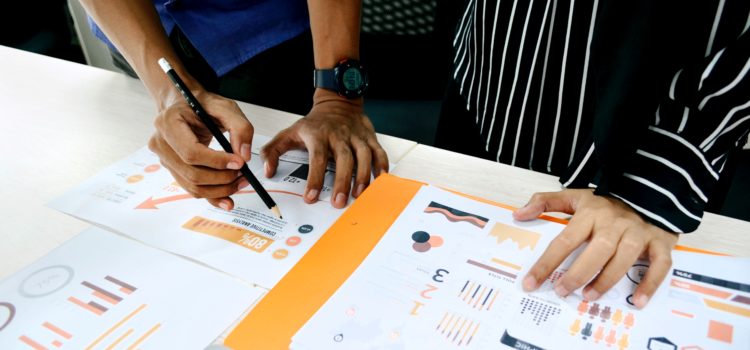

This article is an excerpt from the Shortform book guide to "High Output Management" by Andrew S. Grove. Shortform has the world's best summaries and analyses of books you should be reading.
Like this article? Sign up for a free trial here .
What is production testing? Why should you do production testing?
Production testing examines the process of production as well as the quality of goods. You’ll need to conduct production testing to ensure you’re meeting quality standards at the most effective output.
Read more about production testing and how it works.
Production Testing
Testing examines the raw materials, parts, or the final product for flaws. First, we’ll look at when you should test, and then we’ll look at the different ways you can carry it out.
Timing of Tests
As we learned, material gains value as it passes through each production stage. Therefore, you should always try to catch problems at the lowest possible stage to save yourself money.
You should test at three different points during production:
Point #1: Upon Receipt of the Raw Materials
This is also called an incoming or receiving inspection. If you can catch any problems at this early stage, you can avoid contaminating the whole product with one bad component.
- Manufacturing example: If your eggs are rotten, you’ll have to throw out all the breakfasts you make with them, wasting toast and coffee as well. If you can reject the eggs before you even get started, you’ll save other raw materials.
- (Shortform example: If one of your tasks is to organize the printing of a festival program, look at the page proofs as early as possible so that if there’s a critical mistake, you can fix it before printing samples or the final program.)
If raw material inventory doesn’t meet your standards, you have two choices:
Choice #1: Send it back. If you do this, you won’t be able to build anything until you replenish your supply, which may cost you in lost opportunity.
To avoid getting into this situation, purchase extra raw material inventory. The general rule is that you should have enough to last you the amount of time it would take to replace your inventory.
- Manufacturing example: If you get eggs delivered once a day, you should always keep a day’s worth of eggs, so that if one day, the entire delivery is rotten, you have enough to last until the next delivery. The rule is general because having inventory costs money (storage space costs money), so you have to consider the trade-off.
- Business example: In a managerial sense, raw inventory is yet-to-be-started discretionary projects that aren’t urgent. You should have these backburner tasks to work on so that when you get free time, you aren’t tempted to micromanage or interfere with your subordinates’ work.
Choice #2: Use it anyway. If you do this, the quality of some of your final products will be lower.
In manufacturing, the decision is usually based on cost—which is more expensive, an idle factory, or a lower-quality product? (To decide, manufacturers gather managers from the manufacturing, design engineering, and quality assurance departments to discuss.)
However, there is one hard rule: Never use unacceptable material if it could cause your product to completely fail, which is called a reliability problem. Complete failure has unpredictable and potentially dangerous consequences.
- (Shortform manufacturing example: If your company makes bicycle helmets and the paint you use to color them blue is the wrong shade, go ahead and use it. If there’s something wrong with the life-saving parts of the helmet, don’t use them, because someone could die.)
Point #2: In Process
These tests check the components while they’re at various stages of completion. There are two types:
Type #1: Functional, which involves destroying a product to check its quality.
- Manufacturing example: You might occasionally open an egg after it’s been boiled to make sure it’s cooked properly.
Type #2: Process, which involves checking the process that makes the product. This option is generally better because you don’t have to destroy any product.
- Manufacturing example: You might check the temperature of the egg-cooking water using a thermometer to make sure it’s hot enough to boil the eggs.
Point #3: After Assembly
This is also called the final or outgoing quality inspection. The final, assembled product is tested.
- Manufacturing example: You might look at the plate of breakfast to make sure all the components are there. You can visually confirm that they’re hot and cooked by looking for steam.
- (Shortform business example: You might look at a report by a subordinate when it’s fully completed and about to be sent off.)
How to Test Cost-Effectively
Production testing costs money for two reasons:
- The actual test requires you to pay inspectors.
- The testing process disrupts the manufacturing process because it requires you to stop line or move material back to an earlier stage. Slowing production is expensive because when a factory isn’t producing, it’s not paying its running costs.
- For example, if material is rejected at stage four, it may be sent back to stage two, which upsets the flow of everything currently at stage two.
Therefore, to minimize costs, it’s important to carefully consider what type of production testing to use. There are two ways to test and you can use either of them at any stage of the process:
1. Gate, in which all material is held at a certain stage until the inspection is complete. If the material passes, it all moves to the next step, and if it fails, it all gets thrown out or returned to an earlier stage.
The disadvantage of this method is that gate inspections take a long time and are expensive. The advantage is that no substandard material makes it to a higher-value stage.
2. Monitoring, in which you take a sample of the material to test while the rest of it moves onto the next stage. If the sample fails the inspection, you can stop the line. Monitoring is the best way to test unless you have reason to believe there’s going to be a big problem.
The disadvantage of this method is that some substandard material might get to a higher-value stage before the sample results come back. The advantage is that it’s less expensive as you’re not stopping the entire production line, which means you can do more of it for the same price as a gate inspection. Therefore, you might actually end up with a higher quality product even though the risk of substandard material sneaking through is greater.
You can also increase the efficiency and cost-effectiveness of production testing by testing on a variable schedule—testing according to need. For example, if a factory goes days without finding a problem, inspectors can test less. If problems develop, inspect more often until the quality is the same as it was before reducing inspections.

———End of Preview———
Like what you just read? Read the rest of the world's best book summary and analysis of Andrew S. Grove's "High Output Management" at Shortform .
Here's what you'll find in our full High Output Management summary :
- How to increase your managerial output and productivity
- The 11 activities that offer a higher impact on output
- How meetings can be used as a time management tool






